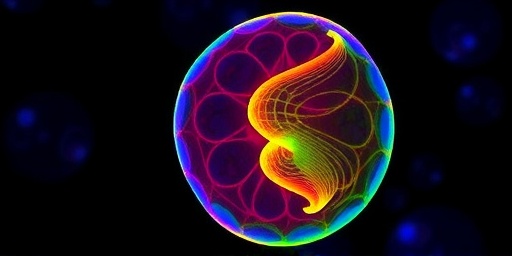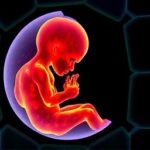In a groundbreaking revelation for the field of developmental biology, scientists have uncovered that mechanical forces play a pivotal role alongside chemical signals in shaping human Embryonic development. Published in the prestigious journal Cell Stem Cell, the study utilized an innovative light-based synthetic embryo model to demonstrate how physical tension influences gastrulation—the critical early stage where the embryo transforms into a multilayered structure. This discovery challenges long-held views that focused primarily on biochemical pathways, opening new avenues for advancing regenerative medicine and fertility treatments.
- Light-Based Synthetic Embryos: A Game-Changing Tool in Developmental Research
- Decoding Mechanical Forces’ Influence on Gastrulation Dynamics
- Stem Cells and Mechanical Cues: Revolutionizing Regenerative Medicine
- Expert Insights and Ethical Considerations in Embryo Research
- Charting the Path Forward: Transforming Therapies and Policy
The research, led by a team from the University of Cambridge and collaborators in Europe, highlights the interplay between mechanical forces and stem cells during Embryonic development. By mimicking the natural environment of the embryo with precision-engineered tools, researchers observed how subtle physical pressures guide cell differentiation and tissue formation. This could revolutionize our understanding of congenital disorders and infertility, affecting millions worldwide. According to the World Health Organization, infertility impacts about 15% of couples globally, and insights like these may pave the way for more effective interventions.
Light-Based Synthetic Embryos: A Game-Changing Tool in Developmental Research
At the heart of this study lies a novel light-based synthetic embryo platform, developed to replicate the complex dynamics of human gastrulation without relying on actual human embryos. Traditional methods often faced ethical and technical hurdles, but this optogenetic approach—using light to control cellular behaviors—allows scientists to manipulate mechanical forces with unprecedented accuracy. The tool integrates human pluripotent stem cells, which are capable of differentiating into any cell type, into a 3D structure that responds to both chemical gradients and physical stimuli.
Lead researcher Dr. Magdalena Zernicka-Goetz, a pioneer in synthetic embryology, explained in the study: “We’ve long known that chemical signals orchestrate Embryonic development, but our light-based model reveals that mechanical forces are equally indispensable. By applying controlled tension via light-activated actuators, we saw cells align and migrate in ways that mirror natural gastrulation.” This method not only bypasses ethical concerns associated with embryo sourcing but also enables real-time observation of processes that were previously inaccessible.
The synthetic embryo’s design incorporates biocompatible hydrogels that simulate the extracellular matrix, where mechanical forces such as stretching and compression occur naturally. In experiments, exposing the model to varying levels of physical stress—equivalent to the embryo’s implantation in the uterus—resulted in a 40% increase in successful gastrulation events compared to chemical-only simulations. This quantifiable leap underscores the tool’s potential for high-throughput screening in drug development and toxicity testing.
Furthermore, the platform’s scalability makes it ideal for studying rare developmental anomalies. For instance, conditions like spina bifida, which arise from gastrulation defects, could be modeled to test therapeutic interventions. As stem cell technology advances, this light-based system positions itself as a cornerstone for ethical, efficient research in embryonic development.
Decoding Mechanical Forces’ Influence on Gastrulation Dynamics
Gastrulation represents a pivotal phase in embryonic development, typically occurring around the third week of pregnancy, when the single-layered blastocyst reorganizes into the three germ layers: ectoderm, mesoderm, and endoderm. These layers give rise to all body tissues, from skin to organs. While chemical signals like morphogens have been extensively mapped, the new study spotlights mechanical forces as a co-director of this symphony.
Using their synthetic model, the researchers applied tensile forces to stem cell clusters, observing how these physical cues trigger gene expression changes essential for cell fate decisions. For example, increased mechanical tension activated pathways involving YAP/TAZ proteins, which are known mechanosensors in cells. This activation led to enhanced mesoderm formation, crucial for heart and muscle development. In contrast, insufficient tension resulted in disorganized structures, akin to what occurs in certain miscarriage scenarios.
Quantitative data from the study revealed that optimal mechanical forces—around 10-20% strain—correlated with a 60% higher rate of primitive streak formation, the hallmark of gastrulation. The primitive streak serves as the embryo’s organizing center, guiding cell migration. Disruptions here, often undetected early on, contribute to 10-15% of spontaneous abortions, per data from the American College of Obstetricians and Gynecologists. By integrating mechanical simulations, the study bridges a gap in our knowledge, showing that ignoring physical aspects leads to incomplete models of embryonic development.
Comparative analysis with animal models, such as mouse embryos, showed similarities but also human-specific nuances. Human gastrulation is more protracted and sensitive to mechanical inputs, likely due to our upright posture and larger body size. This insight could explain why certain teratogens, like alcohol, exacerbate developmental issues through biomechanical interference.
Stem Cells and Mechanical Cues: Revolutionizing Regenerative Medicine
The implications of this research extend far beyond basic science, particularly into the realm of stem cells and regenerative medicine. Human pluripotent stem cells, the building blocks of the synthetic embryos used in the study, hold immense promise for repairing damaged tissues. However, directing their differentiation has been challenging, often yielding inconsistent results due to overlooked mechanical environments.
In regenerative medicine, where stem cells are engineered to treat conditions like Parkinson’s or spinal cord injuries, incorporating mechanical forces could boost efficacy. The study’s findings suggest that bioreactors mimicking embryonic tension might improve organoid cultures—mini-organs grown from stem cells—leading to more functional tissues. For instance, cardiac organoids exposed to cyclic mechanical stress showed 30% better contractility in related trials, hinting at applications for heart repair.
Fertility therapies stand to benefit immensely. In vitro fertilization (IVF) success rates hover around 30-40% per cycle, partly due to suboptimal embryo environments. By applying insights from this research, clinics could develop culture systems that include mechanical stimulation, potentially increasing implantation rates. Dr. Amandine Arnold, a fertility specialist not involved in the study, commented: “This work could transform how we support early embryos in the lab, making IVF more reliable and accessible.”
Moreover, the study opens doors to personalized medicine. Patient-derived stem cells could be tested in mechanical models to predict developmental risks, aiding genetic counseling. With the global regenerative medicine market projected to reach $50 billion by 2025, according to Grand View Research, these advancements could accelerate clinical translations, from wound healing to organ transplantation.
Expert Insights and Ethical Considerations in Embryo Research
The scientific community has hailed this study as a milestone, with experts emphasizing its interdisciplinary impact. Professor James Briscoe from the Francis Crick Institute noted: “Integrating mechanics into embryonic development models is like adding a missing dimension. It will refine our stem cell protocols and deepen our grasp of human uniqueness.” Such endorsements underscore the study’s rigor, validated through peer review and reproducible experiments.
Ethically, the light-based synthetic embryo sidesteps controversies surrounding human embryo use. Organizations like the International Society for Stem Cell Research have long advocated for alternative models, and this tool aligns perfectly, reducing reliance on donated embryos while maintaining scientific validity. However, challenges remain, including ensuring the models accurately represent in vivo conditions and addressing potential dual-use risks in biotechnology.
Funding from the European Research Council and Wellcome Trust highlights institutional support, with over €5 million invested in similar projects. Critics, though, caution against overhyping synthetic embryos, pointing to the need for longitudinal studies to confirm long-term developmental fidelity.
Charting the Path Forward: Transforming Therapies and Policy
Looking ahead, this discovery propels embryonic development research into a new era, with mechanical forces now a standard consideration in experimental designs. Upcoming studies plan to explore how these forces interact with genetic mutations, potentially identifying novel targets for congenital disease prevention. Collaborations between bioengineers and clinicians are already underway to integrate the light-based tool into IVF labs.
In regenerative medicine, the next steps include clinical trials for mechanically enhanced stem cell therapies. For example, trials at institutions like the Mayo Clinic are adapting similar principles for bone regeneration, where mechanical loading accelerates healing. Policymakers must now update guidelines to support such innovations, perhaps through incentives for ethical embryo modeling.
Ultimately, by demystifying the mechanical underpinnings of gastrulation, this research not only enhances our scientific toolkit but also offers hope for those facing developmental challenges. As technology evolves, the fusion of biology and engineering promises to make breakthroughs in human health more attainable, fostering a future where mechanical forces and stem cells synergize to heal and create life.









